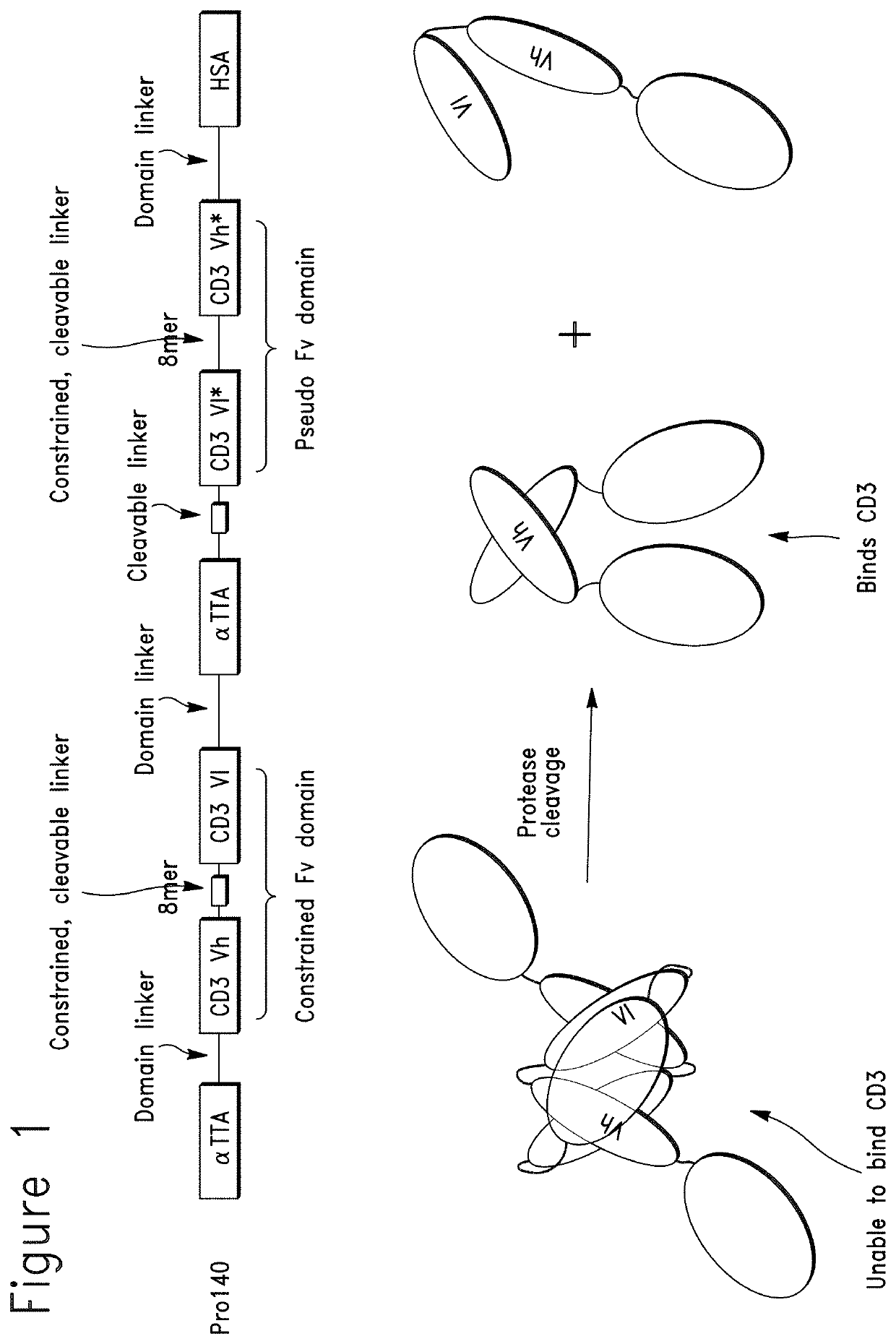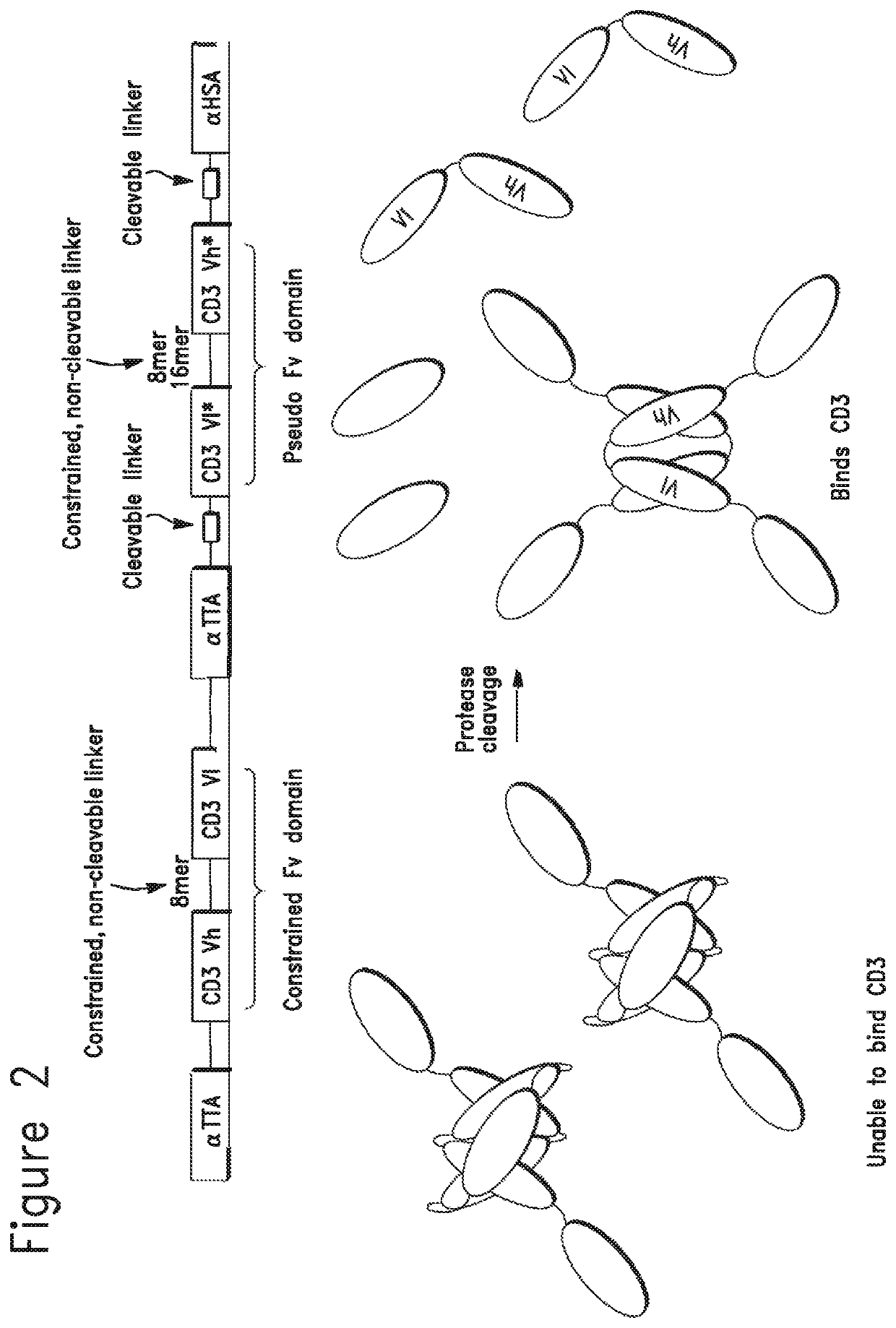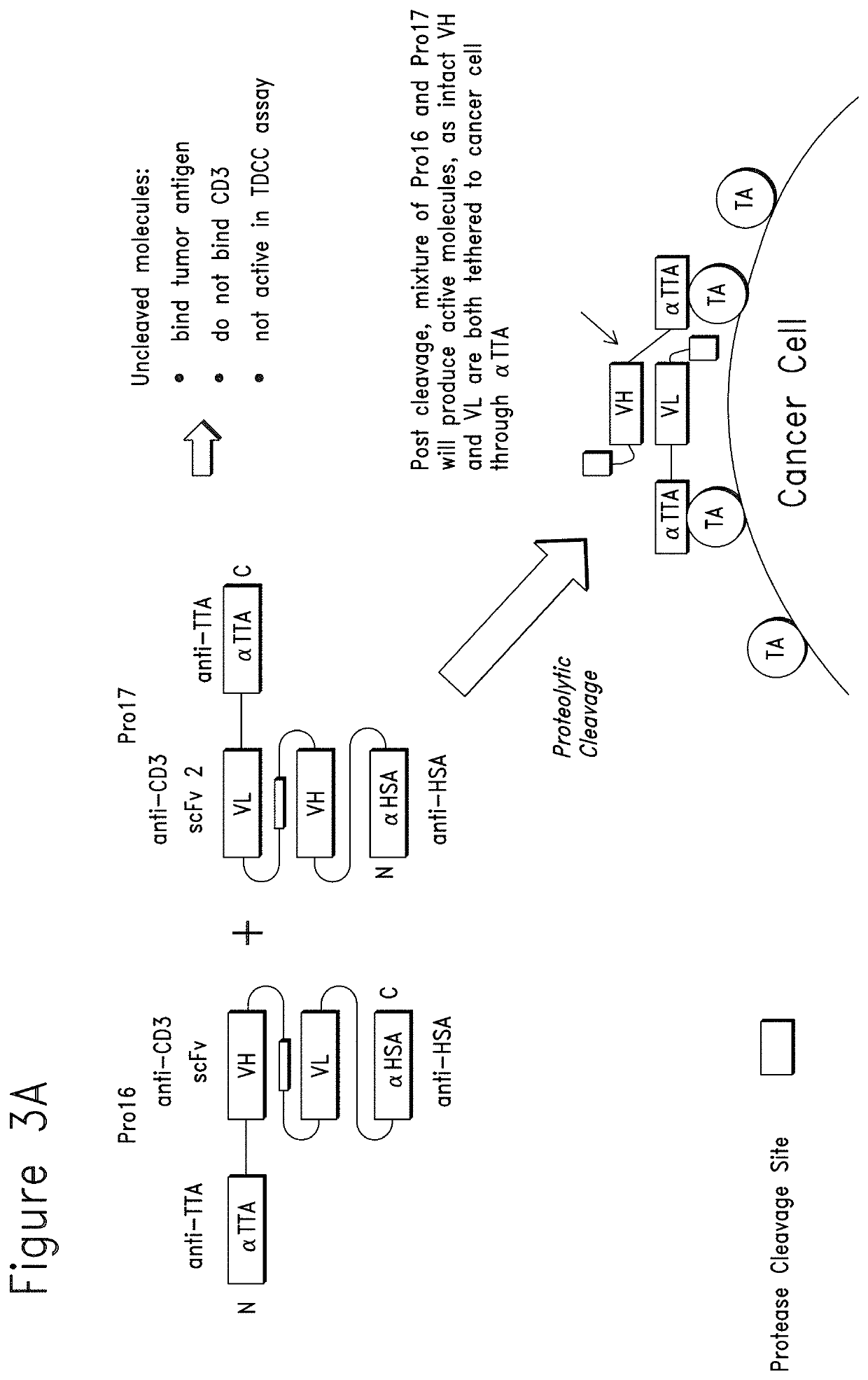Constrained conditionally activated binding proteins
a binding protein and conditional activation technology, applied in the direction of antibody medical ingredients, instruments, drug compositions, etc., can solve the problems of limited clinical applications, low potency, and inability to reach the central portion of the tumor with intact antibody constructs
- Summary
- Abstract
- Description
- Claims
- Application Information
AI Technical Summary
Problems solved by technology
Method used
Image
Examples
example 2
B. T Cell Dependent Cellular Cytotoxicity (TDCC) Assays
[0300]Firefly Luciferase transduced HT-29 cells were grown to approximately 80% confluency and detached with Versene (0.48 mM EDTA in PBS-Ca-Mg). Cells were centrifuged and resuspended in TDCC media (5% Heat Inactivated FBS in RPMI 1640 with HEPES, GlutaMax, Sodium Pyruvate, Non-essential amino acids, and β-mercaptoethanol). Purified human Pan-T cells were thawed, centrifuged and resuspended in TDCC media.
[0301]A coculture of HT-29_Luc cells and T cells was added to 384-well cell culture plates. Serially diluted COBRAs were then added to the coculture and incubated at 37° C. for 48 hours. Finally, an equal volume of SteadyGlo luciferase assay reagent was added to the plates and incubated for 20 minutes. The plates were read on the Perkin Elmer Envision with an exposure time of 0.1 s / well. Total luminescence was recorded and data were analyzed on GraphPad Prism 7.
example 3
C. General Protocol Design of the In Vivo Adoptive T Cell Transfer Efficacy Model
[0302]These protocols were used in many of the experiments of the figures. Tumor cells were implanted subcutaneous (SC) in the right flank of NSG (NOD.Cg-Prkdcscid Il2rgtm1Wjl / SzJ) mice (The Jackson Laboratory, Cat. No. 005557) and allowed to grow until an established tumor with a mean volume of around 200 mm3 was reached. In parallel human T cells were cultured in T cell media (X-VIVO 15 [Lonza, Cat. No. 04-418Q], 5% Human Serum, 1% Penicillin / Streptomycin, 0.01 mM 2-Mercaptoethanol) in a G-Rex100M gas permeable flask (Wilson Wolf Cat. No. 81100S) with MACSiBeads from the T Cell Activation / Expansion Kit (Miltenyi Cat. No. 130-091-441) for around 10 days and supplemented with recombinant human IL-2 protein. Tumor growth in mice and human T cell activation / expansion were coordinated so that on Day 0 of the study mice were randomized into groups (N=6) based on tumor size; each were then injected intraven...
PUM
| Property | Measurement | Unit |
|---|---|---|
| time | aaaaa | aaaaa |
| time | aaaaa | aaaaa |
| time | aaaaa | aaaaa |
Abstract
Description
Claims
Application Information
 Login to View More
Login to View More - R&D
- Intellectual Property
- Life Sciences
- Materials
- Tech Scout
- Unparalleled Data Quality
- Higher Quality Content
- 60% Fewer Hallucinations
Browse by: Latest US Patents, China's latest patents, Technical Efficacy Thesaurus, Application Domain, Technology Topic, Popular Technical Reports.
© 2025 PatSnap. All rights reserved.Legal|Privacy policy|Modern Slavery Act Transparency Statement|Sitemap|About US| Contact US: help@patsnap.com



